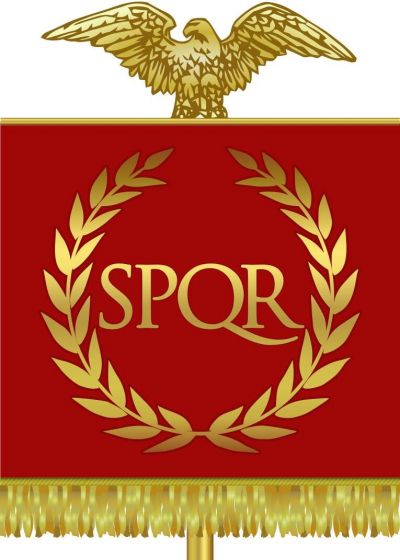Marcus Didius Julianus (; 29 January 133 or 137 2 June 193) was Roman emperor for nine weeks from March to June 193, during the Year of the Five Emperors. Julianus had a promising political career, governing several provinces, including Dalmatia and Germania Inferior, and defeated the Chauci and Chatti, two invading Germanic tribes. He was even appointed to the consulship in 175 along with Pertinax as a reward, before being demoted by Commodus. After this demotion, his early, promising political career languished.
Julianus ascended the throne after buying it from the Praetorian Guard, who had assassinated his predecessor Pertinax. A civil war ensued in which three rival generals laid claim to the imperial throne. Septimius Severus, commander of the legions in Pannonia and the nearest of the generals to Rome, marched on the capital, gathering support along the way and routing cohorts of the Praetorian Guard Julianus sent to meet him. Abandoned by the Senate and the Praetorian Guard, Julianus was killed by a soldier in the palace and succeeded by Severus.
The Roman emperor was the ruler of the Roman Empire during the imperial period (starting with the granting of the title augustus to Octavian in 27 BC). The emperors used a variety of different titles throughout history. Often when a given Roman is described as becoming "emperor" in English it reflects his taking of the title augustus (and later basileus). Another title often used was caesar, used for heirs-apparent, and imperator, originally a military honorific. Early emperors also used the title princeps civitatis ('first citizen'). Emperors frequently amassed republican titles, notably princeps senatus, consul, and pontifex maximus.
The legitimacy of an emperor's rule depended on his control of the army and recognition by the Senate; an emperor would normally be proclaimed by his troops, or invested with imperial titles by the Senate, or both. The first emperors reigned alone; later emperors would sometimes rule with co-emperors and divide administration of the empire between them.
The Romans considered the office of emperor to be distinct from that of a king. The first emperor, Augustus, resolutely refused recognition as a monarch. For the first three hundred years of Roman emperors, from Augustus until Diocletian, efforts were made to portray the emperors as leaders of the republic, fearing any association with the kings of Rome prior to the Republic.
From Diocletian, whose tetrarchic reforms also divided the position into one emperor in the West and one in the East, until the end of the Empire, emperors ruled in an openly monarchic style and did not preserve the nominal principle of a republic, but the contrast with "kings" was maintained: although the imperial succession was generally hereditary, it was only hereditary if there was a suitable candidate acceptable to the army and the bureaucracy, so the principle of automatic inheritance was not adopted. Elements of the republican institutional framework (senate, consuls, and magistrates) were preserved even after the end of the Western Empire.
The reign of Constantine the Great witnessed the removal of the Caput Mundi from Rome to Constantinople, formerly known as Byzantium, in 330 AD. The Western Roman Empire collapsed in the late 5th century after multiple invasions of imperial territory by Germanic barbarian tribes. Romulus Augustulus is often considered to have been the last emperor of the West, until his forced abdication in 476, although Julius Nepos maintained a claim recognized by the Eastern Empire to the title until his death in 480. Following Nepos' death, the Eastern emperor Zeno abolished the division of the position and proclaimed himself as the sole emperor of a reunited Roman Empire. The subsequent Eastern emperors ruling from Constantinople continued to style themselves "Emperor of the Romans" (later βασιλεύς Ῥωμαίων in Greek), but are often referred to in modern scholarship as Byzantine emperors. Constantine XI Palaiologos was the last Roman emperor in Constantinople, dying during the Fall of Constantinople to the Ottoman Empire in 1453.
The "Byzantine" emperors from Heraclius in 629 and onwards adopted the monarchic title of basileus (βασιλεύς), which became a title reserved solely for the Roman emperor and the ruler of the Sasanian Empire. Other rulers were then referred to as rēgas.In addition to their pontifical office, some emperors were given divine status after death. With the eventual hegemony of Christianity, the emperor came to be seen as God's chosen ruler, as well as a special protector and leader of the Christian Church on Earth, although in practice an emperor's authority on Church matters was subject to challenge.
Due to the cultural rupture of the Turkish conquest, most western historians treat Constantine XI as the last meaningful claimant to the title Roman emperor. From 1453, one of the titles used by the Ottoman Sultans was "Caesar of Rome" (Turkish: Kayser-i Rum), part of their titles until the Ottoman Empire ended in 1922. A Byzantine group of claimant Roman emperors existed in the Empire of Trebizond until its conquest by the Ottomans in 1461, though they had used a modified title since 1282.
Eastern emperors in Constantinople had been recognized and accepted as Roman emperors both in the East, which they ruled, and by the papacy and Germanic kingdoms of the West until the deposition of Constantine VI and accession of Irene of Athens as Empress regnant in 797. Objecting to a woman ruling the Roman Empire in her own right and issues with the eastern clergy, the Papacy would then create a rival lineage of Roman emperors in western Europe, the Holy Roman Emperors, which ruled the Holy Roman Empire for most of the period between 800 and 1806. These emperors were never recognized as Roman emperors by the court in Constantinople and their coronations resulted in the medieval problem of two emperors.

 English
English  español
español  français
français  português
português  русский
русский  العربية
العربية  简体中文
简体中文 
